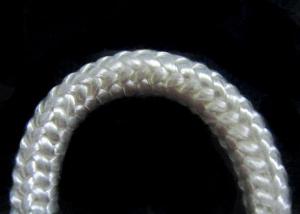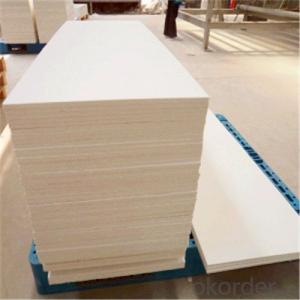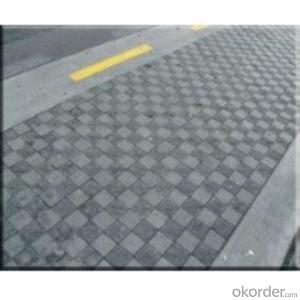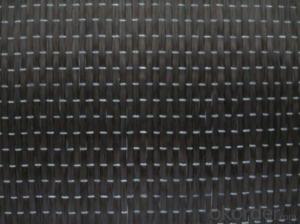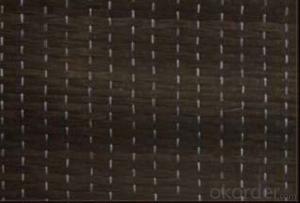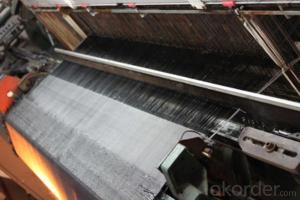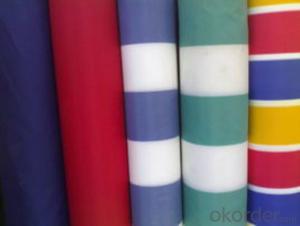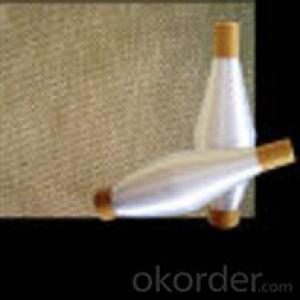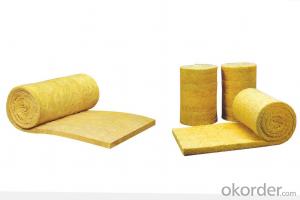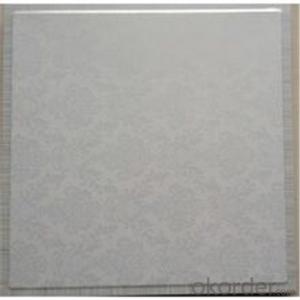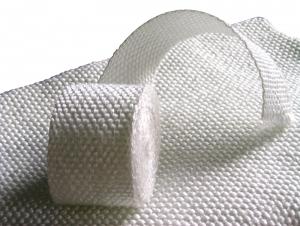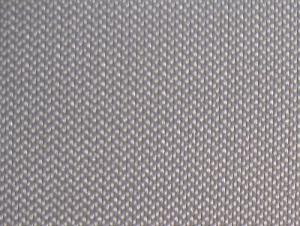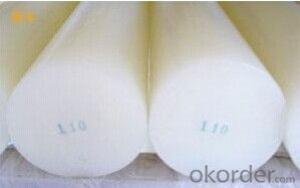Textured Fiberglass Rope
- Loading Port:
- China Main Port
- Payment Terms:
- TT or L/C
- Min Order Qty:
- 10 Tons kg
- Supply Capability:
- 2*20FCL Per Month kg/month
OKorder Service Pledge
OKorder Financial Service
You Might Also Like
Brief Description
Fiberglass Texturized Rope This rope has two kinds of structure.
One is braided rope which consists of parallel texturized threads, strips or ropes, with texturized yarn braided around them.
Another is twisted rope which is made bya certain number
Product Attributes
Type:Other Heat Insulation Materials
Place of Origin:China (Mainland)
Detailed introduction to Fiberglass Textured Rope:
Fiberglass Texturized Rope
This rope has two kinds of structure. One
is braided rope which consists of parallel
texturized threads, strips or ropes, with
texturized yarn braided around them.
Another is twisted rope which is made by
a certain number strands of texturized
yarn twisted tightly together to form a
rope with high tensile strength.

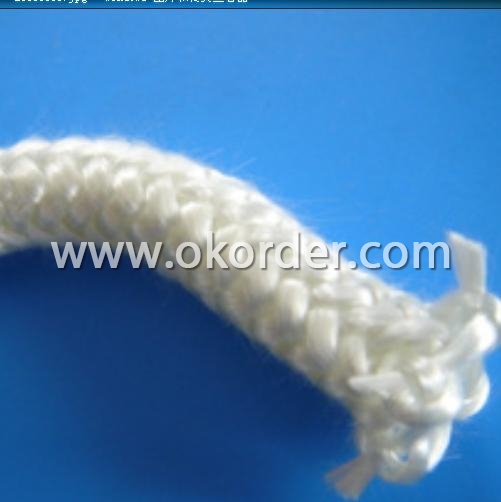
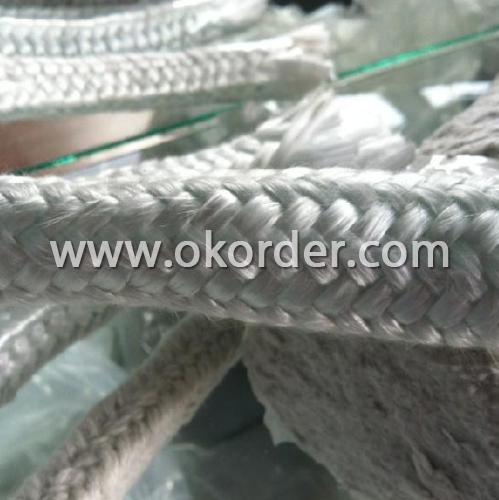
- Q:Is glass fiber textile waterproof?
- No, glass fiber textile is not waterproof.
- Q:How do glass fiber textiles perform in terms of moisture wicking?
- Glass fiber textiles do not perform well in terms of moisture wicking. Unlike natural fibers such as cotton or synthetic fibers like polyester, glass fiber textiles do not have a high absorbency rate and are not designed to wick away moisture from the body.
- Q:Can glass fiber textiles be used in reinforcement of rubber?
- Yes, glass fiber textiles can be used in the reinforcement of rubber. Glass fiber textiles are known for their high strength and excellent mechanical properties, making them ideal for improving the tensile strength and durability of rubber products. When incorporated into rubber composites, glass fiber textiles enhance the overall performance and increase the load-bearing capacity of the rubber material. The glass fibers provide reinforcement by distributing stress more evenly throughout the rubber matrix, thereby reducing the risk of cracks and enhancing resistance to deformation. Additionally, glass fiber textiles can improve tear resistance, abrasion resistance, and dimensional stability of rubber products. This makes them particularly suitable for applications such as automotive components, conveyor belts, hoses, gaskets, and seals, where strong and durable rubber materials are required.
- Q:How are glass fiber textiles used in the aerospace industry?
- Glass fiber textiles are used in the aerospace industry for various applications, including reinforcement of composite materials, thermal insulation, and protection against high temperatures. These textiles, made from glass fibers, are lightweight, strong, and have excellent heat resistance properties, making them ideal for use in aircraft structures, spacecraft, and other aerospace components.
- Q:Can glass fiber textile be quilted?
- Yes, glass fiber textile can be quilted.
- Q:How do glass fiber textiles perform in terms of impact resistance?
- Glass fiber textiles are known for their excellent impact resistance. The fibers used in these textiles are made from glass, which is a strong and durable material. This makes them highly resilient to impacts, making them suitable for a wide range of applications where impact resistance is crucial. Glass fiber textiles have a high tensile strength, meaning they can withstand a significant amount of force without breaking or deforming. This property allows them to absorb and distribute the energy from an impact, preventing it from being concentrated on a single point. As a result, glass fiber textiles can effectively resist damage caused by impacts, such as cracks, fractures, or punctures. Moreover, the inherent elasticity of glass fiber textiles contributes to their impact resistance. When subjected to an impact, these textiles can flex and absorb the energy, reducing the risk of breakage. This flexibility also enables them to maintain their shape and structural integrity even after repeated impacts, making them ideal for use in high-impact environments. Furthermore, glass fiber textiles exhibit good resistance to temperature changes, chemicals, and moisture, which further enhances their impact resistance. These textiles can withstand extreme temperatures without losing their structural integrity, making them suitable for use in both hot and cold environments. Additionally, they resist degradation from exposure to various chemicals and moisture, ensuring their durability and impact resistance over time. In summary, glass fiber textiles excel in terms of impact resistance. Their high tensile strength, flexibility, and resistance to temperature changes, chemicals, and moisture make them an excellent choice for applications where impact resistance is crucial. Whether it is in the automotive, aerospace, construction, or sports industries, glass fiber textiles provide reliable protection against impacts, ensuring the longevity and safety of the products they are used in.
- Q:How do glass fiber textiles affect the breathability of masks or respirators?
- The breathability of masks or respirators can be significantly influenced by glass fiber textiles. These textiles possess exceptional filtration properties, allowing them to effectively capture and block small particles, including airborne contaminants and pathogens. Consequently, they are widely chosen for the production of masks and respirators due to their high level of protection. However, the dense nature of glass fiber textiles can also impede the breathability of masks or respirators. The tightly woven fibers create a barrier that makes it more challenging for air to pass through. Consequently, wearing these masks may result in increased resistance during breathing, making it less comfortable for the wearer. To tackle this issue, manufacturers often integrate additional features into the design of masks or respirators utilizing glass fiber textiles. For example, they may incorporate exhalation valves or vents that facilitate smoother airflow out of the mask, thereby reducing breathing resistance. This ensures a balance between filtration efficiency and breathability. It is crucial to acknowledge that although glass fiber textiles can affect breathability, they play a vital role in delivering effective protection against airborne particles. The filtration capabilities of these textiles are essential in preventing the inhalation of harmful substances. Manufacturers strive to optimize the design and construction of masks or respirators to achieve a harmonious blend of breathability and filtration efficiency, guaranteeing the wearer's comfort and safety.
- Q:Are glass fiber textiles resistant to staining or discoloration from food or beverages?
- Yes, glass fiber textiles are highly resistant to staining or discoloration from food or beverages.
- Q:What's the use of glass fiber?
- Glass fiber weaves through the organization, every kind of glass fabric, glass cloth, glass cloth. Both are not afraid not afraid of acid, alkali, filter cloth, it is used as a chemical plant is very ideal. In recent years, many factories have adopted the glass cloth instead of cotton, cloth sack, making bags. This kind of bag rot, moisture anti corrosion, durable, very popular, and also save a lot of cotton. With exquisite patterns of large glass wall, with adhesive to the wall of a stick, elegant appearance, from painting and maintenance, as long as a dirty cloth, the walls immediately become clean.Both glass fiber insulation, and heat insulation material, so it is very good. At present, the majority of China's motor and electric appliance factory has used a large number of glass fiber insulation materials. A 6000 kW turbo generator, wherein the insulating member with glass fiber has reached more than 1800! Due to the use of glass fiber insulation the material, not only improves the performance of the motor, and reduces the volume of the motor, but also reduces the cost of the motor, is really one.
- Q:Can glass fiber textiles be used in furniture?
- Glass fiber textiles, or fiberglass, have a wide range of applications in furniture. This versatile material is lightweight, strong, and durable, making it an excellent choice for constructing furniture. Chairs, tables, and shelves can all benefit from the reinforcement and strength that fiberglass provides. Furthermore, the moldability of fiberglass allows for the creation of unique and innovative furniture designs. Its resistance to moisture, chemicals, and UV radiation also makes it suitable for both indoor and outdoor furniture. Combining fiberglass textiles with other materials, such as wood or metal, can create hybrid furniture pieces that offer the advantages of both materials. Overall, glass fiber textiles have numerous advantages that make them a viable option for furniture manufacturing.
1. Manufacturer Overview |
|
|---|---|
| Location | |
| Year Established | |
| Annual Output Value | |
| Main Markets | |
| Company Certifications | |
2. Manufacturer Certificates |
|
|---|---|
| a) Certification Name | |
| Range | |
| Reference | |
| Validity Period | |
3. Manufacturer Capability |
|
|---|---|
| a)Trade Capacity | |
| Nearest Port | |
| Export Percentage | |
| No.of Employees in Trade Department | |
| Language Spoken: | |
| b)Factory Information | |
| Factory Size: | |
| No. of Production Lines | |
| Contract Manufacturing | |
| Product Price Range | |
Send your message to us
Textured Fiberglass Rope
- Loading Port:
- China Main Port
- Payment Terms:
- TT or L/C
- Min Order Qty:
- 10 Tons kg
- Supply Capability:
- 2*20FCL Per Month kg/month
OKorder Service Pledge
OKorder Financial Service
Similar products
New products
Hot products
Hot Searches
Related keywords
